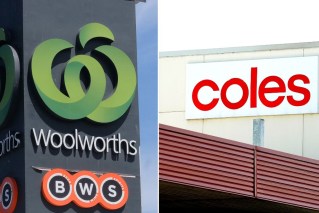Kmart’s winning production formula combats inflation as Target’s profits fall


Kmart has changed how some of its products are designed to combat soaring costs. Photo: AAP
Kmart is making changes to how it designs and manufactures the products it sells as it looks to counter rising inflation.
Wesfarmers chief executive Ian Bailey revealed the changes Friday as the company announced Kmart had increased its sales by 1 per cent, to $6.83 billion, over the year to June 30.
The chain’s earnings, combined with sister business Target, fell by a sizeable 31.7 per cent, however, to $505 million.
Kmart has been changing the mix of products it sells and the way its products are made in a bid to limit inflation flowing on to customers.
“We’ve been very successful,” Mr Bailey said. “As we’ve seen raw material costs increase, we’ve been able to manage margins effectively.”
“If there’s a particular product type or material that’s going up in price faster than others, we’ll look to see how we can modify the construction of the product,” Mr Bailey explained.
Gary Mortimer, a retail expert at the University of Queensland, said Kmart is taking advantage of “vertical integration” – when retailers control their supply chains and mostly sell products they manufacture.
Dr Mortimer said the flexibility in Kmart’s supply chain is one reason its business has succeeded in recent years while similar stores, such as Target, have struggled.
Flexibility is key
Kmart, meanwhile, is facing average cost increases between 5 and 10 per cent “across its range of products,” Mr Bailey said.
“Take cotton, there’s been a significant increase in cotton prices over time, so we wear that within the cost of our products,” he added.
“Occasionally we’ll make minor adjustments to the retail prices, but you know that’s as simple as maybe $4.50 becomes $4.75.”
Vertical integration means Kmart can “be more reactive than most” to inflation, helping it to maintain lower prices than competitors who must work through “intermediaries”, Dr Mortimer said.
“If we go back a decade, Kmart was filled with branded merchandise,” he added.
“But progressively they’ve moved away from brands to developing their own, and once you do that through contract manufacturing you can certainly take advantage.”
“You own everything from design through to selling to the customer.”
Shrinking Target
The Kmart changes were outlined as Wesfarmer’s discussed its annual financial reports, in which the retail conglomerate posted a $2.35 billion net profit (down 2.9 per cent).
Kmart’s store numbers rose from 220 in 2017 to 324 in June 2022, while Wesfarmers closed Target stores as their profitably declined.
There were 303 Target stores in 2017, 139 stores in June 2021 and just 128 stores in June 2022 as many were switched to the Kmart brand.








